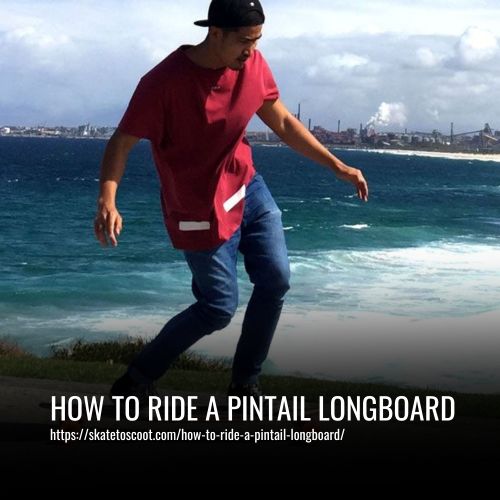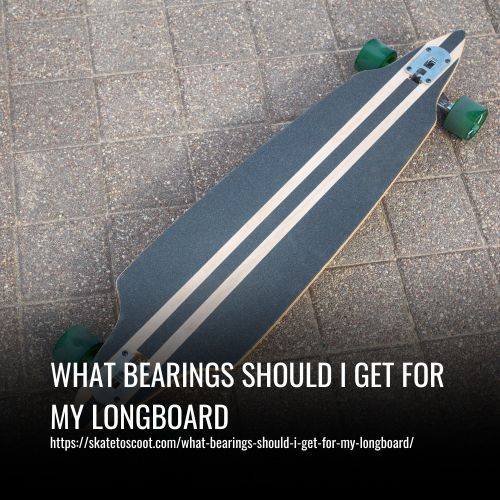As an Amazon Associate we earn from qualifying purchases.
Embarking on the exhilarating journey of riding a Pintail Longboard opens doors to a thrilling and liberating experience on wheels. As a passionate enthusiast and rider myself, I’ve navigated the twists and turns of these iconic longboards, reveling in the seamless harmony between control, style, and the freedom they offer.
In this article, I aim to share insights and tips derived from my firsthand encounters, providing a comprehensive guide on how to master the art of riding a Pintail Longboard. Whether you’re a beginner seeking to carve the pavement or an experienced rider looking to refine your skills, join me as we delve into the intricacies of this timeless boarding experience.

What is Pintal Longboard
A pintail longboard is a popular choice among riders due to its unique design and versatile riding style. These longboards are specifically shaped with a pointy nose, which enhances aerodynamics and allows for a smooth and comfortable ride. The pointy nose also helps in increasing speed, as riders can easily control and adjust their board to their desired limit.
One of the key features of pintail longboards is the set of large wheels they come with. These larger wheels not only provide a stable ride but also allow riders to increase their speed gradually. This makes pintail longboards perfect for cruising and carving on flatter surfaces.
Pintail longboards are suitable for riders of all skill levels, especially beginners, as they offer a predictable ride and comfortable speed. The relaxed riding style and comfortable deck with bolts make it easier for riders to maintain their balance and ride with confidence.
What Makes A Pintail Longboard Different?
A pintail longboard is a unique and versatile choice for riders of all skill levels. With its distinctive pointed shape, the pintail offers stability and control that sets it apart from other longboards.
One of the key features of pintail longboards is their stability at high speeds. The pointed nose and tail design allows for smooth and predictable rides, making them perfect for downhill riding. This stability also makes pintails a popular choice for beginners who are just starting to learn how to longboard.
Pintail longboards are known for their versatility. They can handle a variety of terrains and riding styles, from cruising on flatter surfaces to carving through turns. This versatility makes them a popular choice among experienced riders as well.
How Do You Ride A Pintail Longboard?
To ride a pintail longboard, follow these simple steps:
- Start by positioning yourself on the board. Place your back foot on the tail of the board while keeping your front foot closer to the nose. This position will give you better balance and control.
- Push off with your back foot to gain momentum. Give yourself a few strong pushes to get going, using your front foot to guide the board.
- As you ride, keep your weight centered on the board. This helps maintain stability and prevents speed wobbles. Pay attention to your body positioning and make sure your weight is evenly distributed.
- Keep your eyes up and focus on the road ahead of you. This allows you to anticipate any potential obstacles and react accordingly. Stay aware of your surroundings to ensure a safe ride.
- When making turns, lean your body slightly in the direction you want to go. This helps initiate the turn and allows for smooth carving. Practice turning on flatter surfaces before attempting more advanced maneuvers.
- Remember to relax and enjoy the ride. Pintail longboards are designed for comfortable and relaxed riding experiences. Embrace the smooth and predictable nature of the board and have fun exploring different riding styles and terrains.
Following these steps will help you ride a pintail longboard with ease and confidence. Whether you’re a beginner or a more experienced rider, the pintail shape and design provide a stable and versatile board for enjoyable riding experiences.
Easy Pintail Tricks For Beginner Longboard Riders
- 180 Step: Beginners can start with the 180 Step, which is a simple upright longboard slide. With your front foot in the middle on the toeside edge and your back foot pointing left on the top, slide your front foot to the back left of the board. This trick can be performed at slow speeds and helps you get a feel for steering and balance.
- Cross-step: To test your abilities, try the Cross-step trick. Start by rolling steadily, ensuring you have enough momentum. Place your front foot towards the tail to maintain balance. Lift your back foot and smoothly transfer your weight forward. Keep your head facing forward, move your arms and hips, and it should look like you’re walking along the board.
- Peter Pan: The Peter Pan trick is executed by having your back leg go ahead of your front leg with both feet parallel to maintain balance. With your legs crossed, take another step forward with your front leg and place it in the center of the deck. This trick gives the illusion of dancing on the board.
- Tiger Claw: The Tiger Claw trick requires additional arm strength. With your front foot in the center and back foot on the tail, lift your front foot off the board while your back foot gets the board airborne. Use your preferred hand to grab the board, spin it 360 degrees back on the ground, and hop back on.
- Lookback: For those who want to showcase their moves, try the Lookback trick. Point your back foot towards the back of the board and step off the board with your other foot. Kick the board forward with your foot on the board and stop it with your heel, allowing you to put your foot back on the board.
- Manuals: Mastering Manuals is a challenge. While moving forward, position your front foot on the tail and keep your other foot away from the center for balance. This trick allows you to balance the board on two wheels.
- 180 No-Comply: Experience the thrill of being in the air with the 180 No-Comply trick. Place your front foot in the center and your back foot on the tail. Pop the board in the air with your back foot and aim to have the board flip 180 degrees before it hits the ground.
- Hippie Jump: The Hippie Jump is the ultimate challenge, but it looks impressive when done over obstacles. Cruise down, let gravity take over, and jump over the obstacle while landing back on your board safely.
While these are easy pintail tricks for beginner longboard riders, it’s important to practice and be patient to master them. The Longboard Store offers a wide selection of pintail longboards and boards for riders of all levels. Visit us to find the perfect longboard for you.
How Do You Stop On A Pintail Longboard?
To stop on a pintail longboard, you can use a technique called footbraking. This method involves stepping on the back of the board with your back foot and applying pressure, which causes the rear wheels to lock up and skid, ultimately allowing you to come to a stop.
To execute this maneuver, simply shift your weight onto your back foot and press down firmly on the board. Make sure to keep your body balanced and your weight centered over the board to maintain control. Gradually increase the pressure to slow down, and adjust as necessary to achieve a complete stop.
Does Longboarding Build Muscle?
Longboarding is a fun and exhilarating activity that can provide a variety of benefits for both your physical and mental health. While longboarding may not specifically build muscle like weightlifting or traditional strength training exercises, it can still help to tone and maintain muscle mass.
When you ride a longboard, you engage muscles throughout your entire body to keep balanced and control the board. Your legs are constantly working to control your speed and maintain balance, which can help to tone and strengthen your leg muscles, including your quads, hamstrings, and calves.
Furthermore, longboarding can also improve coordination and agility, which are important components of overall physical fitness. The constant adjustments and movements required while riding a longboard can help to enhance motor skills and proprioception.
Are Pintail Longboards Good For Downhill?
Pintail longboards can be a good choice for downhill riding, especially for beginners. While they are often associated with beginners, pintails offer several advantages for downhill enthusiasts.
Firstly, the wide trucks and large wheels of pintail longboards provide stability, making them suitable for fast and aggressive runs. This stability helps riders maintain control and confidence while descending steep hills.
Moreover, pintails are forgiving, which is crucial for learning the ropes of downhill riding. They allow riders to make mistakes and recover with ease, making the learning process smoother and less intimidating.
Can You Ollie On A Pintail Longboard?
Yes, it is possible to ollie on a pintail longboard, but it requires practice and patience. The best way to learn is by finding a small hill or ramp to practice on. Start by rolling down the hill or ramp and then pop the tail of the board off the ground.
As you become more comfortable, you can start incorporating tricks like 180s or 360s. Pintail longboards are known for their great cruising and carving capabilities, but they can also be used for performing tricks.
With dedication and practice, you can learn to ollie on a pintail longboard and impress your friends with your skills. So go out there and have fun experimenting with different tricks on your pintail longboard.
What Is The Difference Between Pintail And Cruiser?
The main differences between pintail and cruiser Longboards lie in their design and functionality. Pintail boards are typically narrower and more maneuverable, making them well-suited for tricks and skating in tight spaces.
Their smaller size also allows for easier control and quick turns. On the other hand, cruisers tend to have larger wheels, which translates to faster speeds and better performance on longer rides. With a more durable construction, cruisers are favored for rough terrain or street skating. Pintail boards are popular among beginners and those looking for a relaxed riding experience due to their predictable ride and comfortable speed.
Cruisers, with their classic design and larger wheels, offer a versatile board that is ideal for both smooth carving on flatter surfaces and tackling rougher terrains. Ultimately, the choice between a pintail and a cruiser will depend on individual preferences and the intended riding style.
FAQs
A pintail longboard is a type of longboard with a distinctive shape resembling that of a teardrop. It has a pointed nose and a wider tail, which helps with stability and control.
While a flat surface is ideal for beginners, pintail longboards are versatile and can be ridden on various terrains. However, it’s easier to maintain balance and control on smooth, flat surfaces.
Pintail longboards are favored for their relaxed and comfortable rides. Their design and shape provide a predictable ride, making them suitable for beginners and riders who prefer a more laid-back style.
The regular stance (with left foot forward) is commonly used for riding pintail longboards. This stance allows for better control and stability, especially when making turns.
The center of gravity and body weight distribution play a crucial role in maintaining balance and control. Leaning towards the front enhances stability, while leaning back allows for smoother turns.
Pintail longboards are not primarily designed for freestyle tricks, but basic maneuvers like carving and slides can still be achieved with practice and learning proper foot placement.
A: Yes, pintail longboards are a great option for beginner longboarders due to their predictable ride, comfortable speed, and stable design. They are also ideal for cruising and relaxed riding.
Conclusion:
Learning how to ride a pintail longboard is not only a thrilling experience, but it also opens up a whole new world of freedom and exploration. So grab your board, hit the pavement, and let the wind guide you towards endless adventures.
Remember, with practice and determination, you’ll be gliding effortlessly and turning heads in no time. So go ahead, embrace the ride, and enjoy the journey!
Amazon and the Amazon logo are trademarks of Amazon.com, Inc, or its affiliates.



